Abstract
The sera of `normal' rats have been found to contain anti-tissue antibodies from shortly after birth. The antibody titres rose rapidly over the first 3 weeks of life reaching adult levels by the time the rats were 3–6 weeks old. Neonatal rats were rendered tolerant by exposure to bovine serum albumin (BSA). In contrast, higher levels of anti-tissue antibody were found in the sera of neonatal rats exposed to tissue antigens released by experimental liver damage than in the sera of littermate controls. It is suggested that the particulate nature of the tissue antigens may be associated with their ability to provoke an immune response in neonatal rats and that this in turn may be a factor hindering the induction of tolerance to these antigens.
Full text
PDF
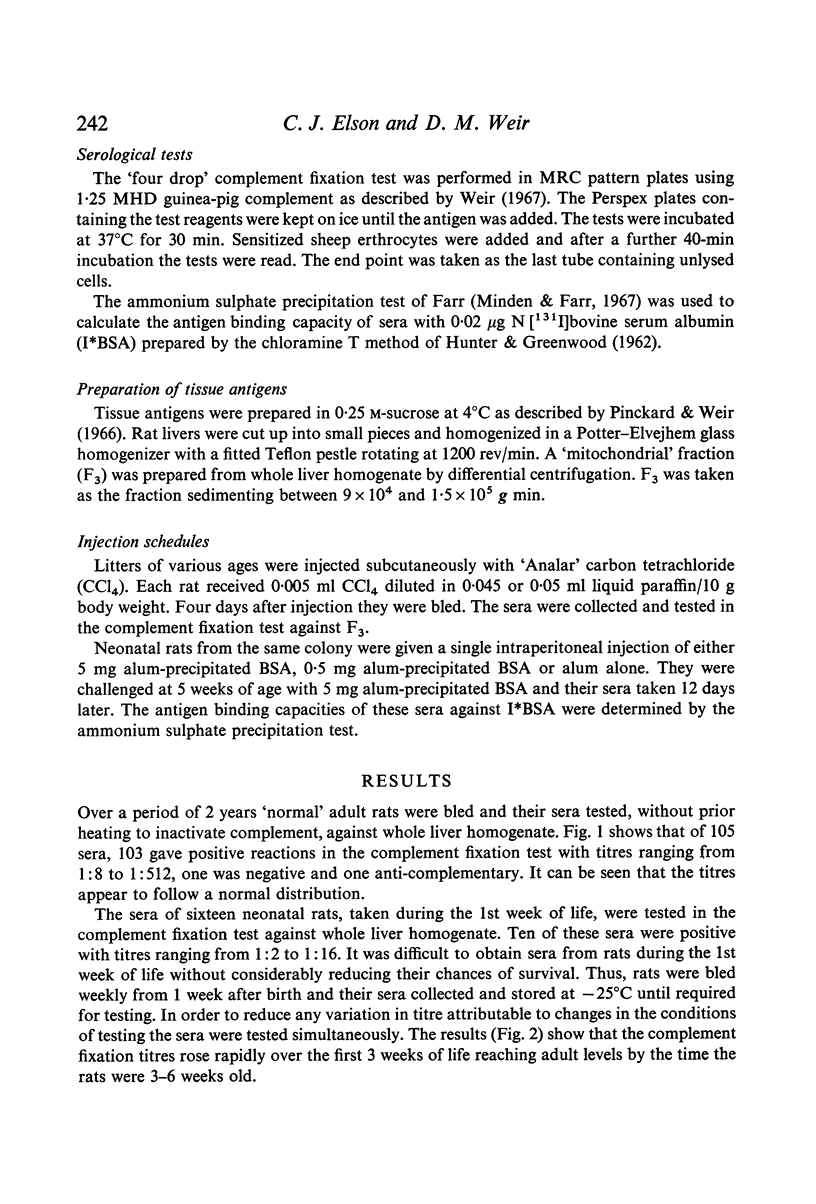
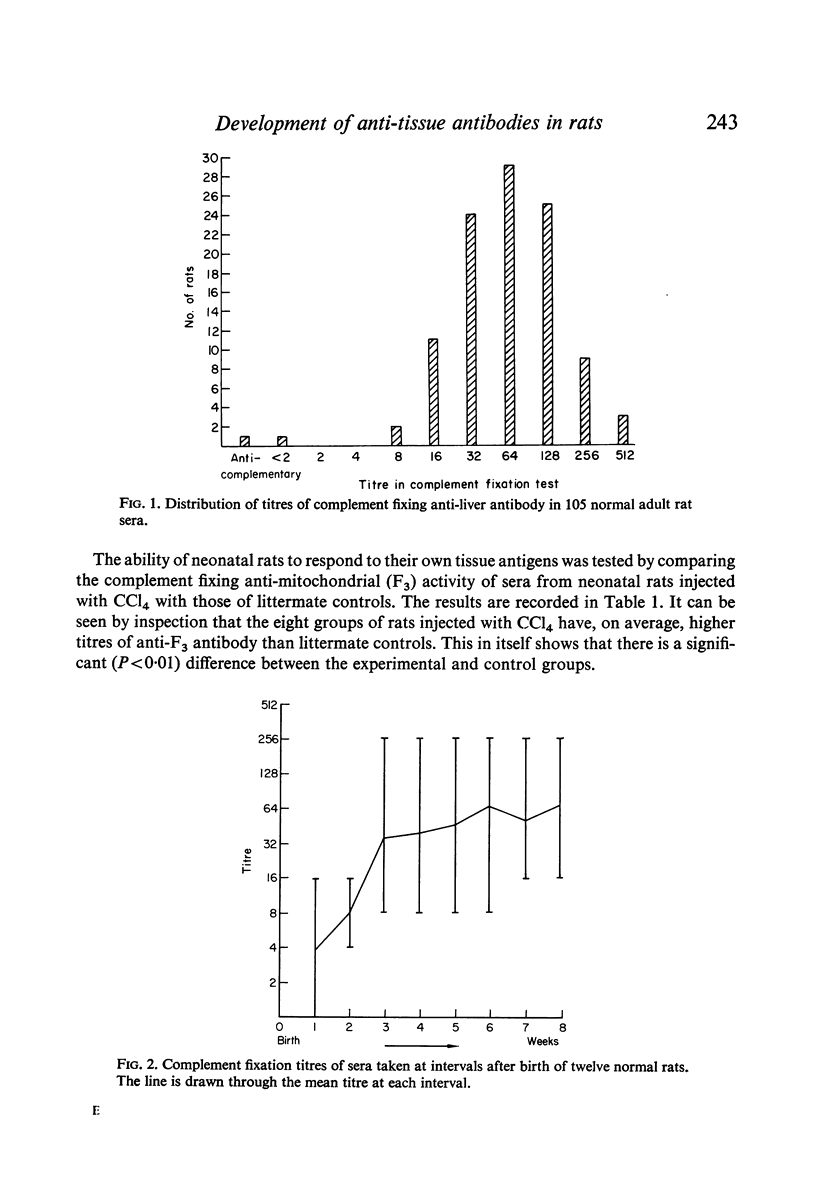
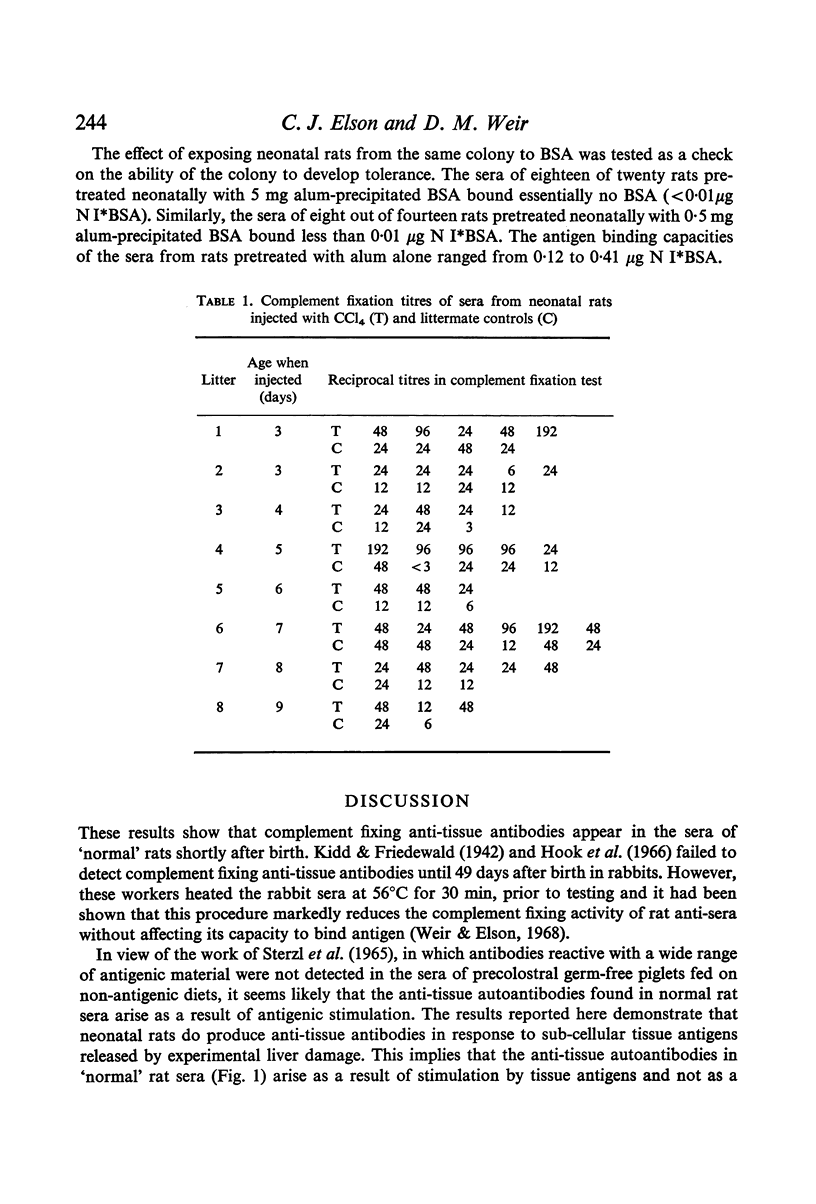
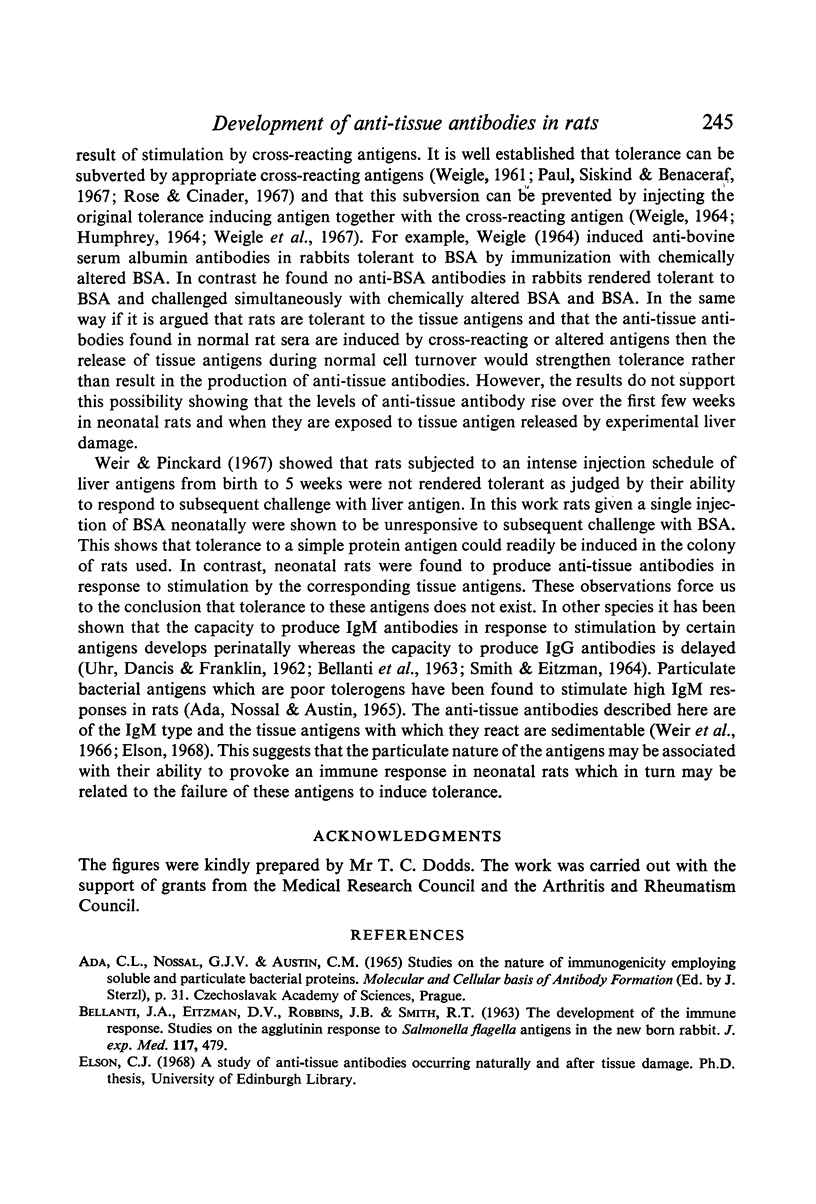
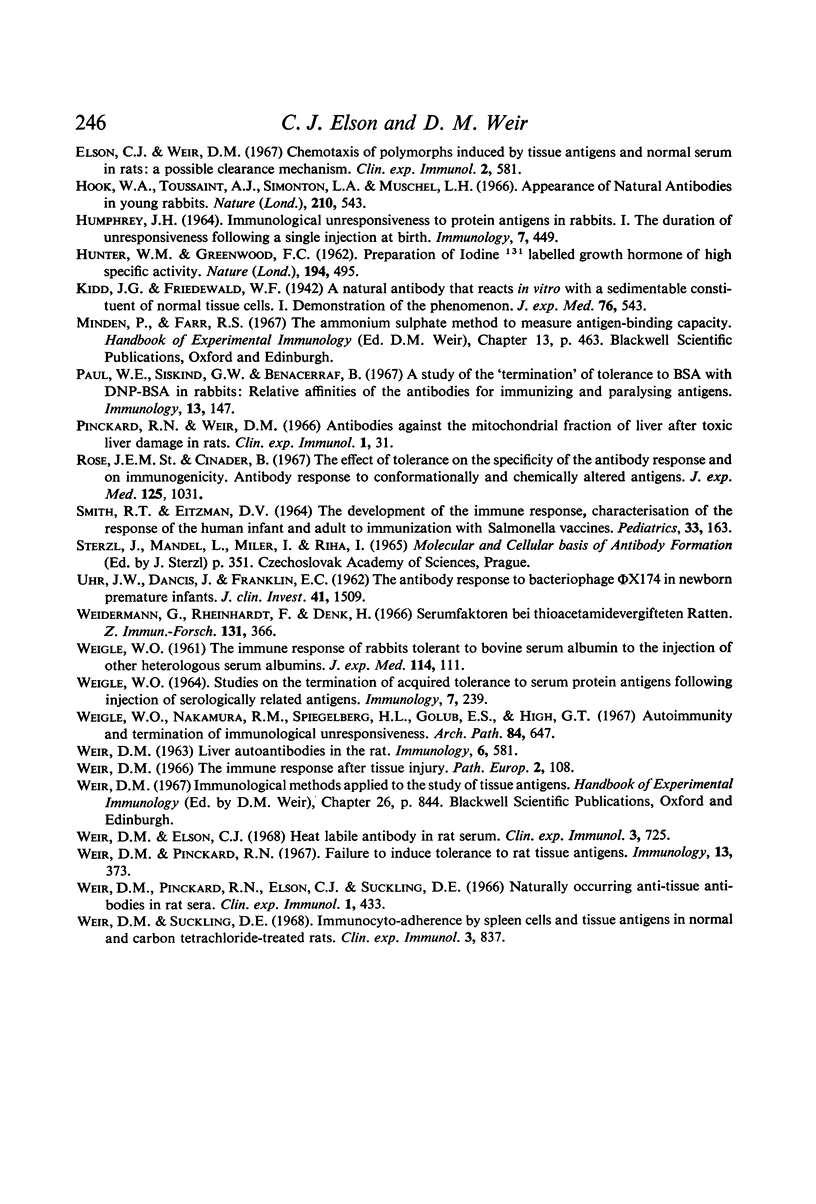
Selected References
These references are in PubMed. This may not be the complete list of references from this article.
- BELLANTI J. A., EITZMAN D. V., ROBBINS J. B., SMITH R. T. The development of the immune response. Studies on the agglutinin response to Salmonella flagellar antigens in the newborn rabbit. J Exp Med. 1963 Mar 1;117:479–496. doi: 10.1084/jem.117.3.479. [DOI] [PMC free article] [PubMed] [Google Scholar]
- Elson C. J., Weir D. M. Chemotaxis of polymorphs induced by tissue antigens and normal serum in rats: a possible clearance mechanism. Clin Exp Immunol. 1967 Sep;2(5):581–588. [PMC free article] [PubMed] [Google Scholar]
- HUMPHREY J. H. IMMUNOLOGICAL UNRESPONSIVENESS TO PROTEIN ANTIGENS IN RABBITS. I. THE DURATION OF UNRESPONSIVENESS FOLLOWING A SINGLE INJECTION AT BIRTH. Immunology. 1964 Jul;7:449–461. [PMC free article] [PubMed] [Google Scholar]
- HUNTER W. M., GREENWOOD F. C. Preparation of iodine-131 labelled human growth hormone of high specific activity. Nature. 1962 May 5;194:495–496. doi: 10.1038/194495a0. [DOI] [PubMed] [Google Scholar]
- Hook W. A., Toussaint A. J., Simonton L. A., Muschel L. H. Appearance of natural antibodies in young rabbits. Nature. 1966 Apr 30;210(5035):543–544. doi: 10.1038/210543a0. [DOI] [PubMed] [Google Scholar]
- Paul W. E., Siskind G. W., Benacerraf B. A study of the 'termination' of tolerance to BSA with DNP-BSA in rabbits: relative affinities of the antibodies for the immunizing and the paralysing antigens. Immunology. 1967 Aug;13(2):147–157. [PMC free article] [PubMed] [Google Scholar]
- SMITH R. T., EITZMAN D. V. THE DEVELOPMENT OF THE IMMUNE RESPONSE. CHARACTERIZATION OF THE RESPONSE OF THE HUMAN INFANT AND ADULT TO IMMUNIZATION WITH SALMONELLA VACCINES. Pediatrics. 1964 Feb;33:163–183. [PubMed] [Google Scholar]
- St Rose J. E., Cinader B. The effect of tolerance on the specificity of the antibody response and on immunogenicity. Antibody response to conformationally and chemically altered antigens. J Exp Med. 1967 Jun 1;125(6):1031–1055. doi: 10.1084/jem.125.6.1031. [DOI] [PMC free article] [PubMed] [Google Scholar]
- UHR J. W., DANCIS J., FRANKLIN E. C., FINKELSTEIN M. S., LEWIS E. W. The antibody response to bacteriophage phi-X 174 in newborn premature infants. J Clin Invest. 1962 Jul;41:1509–1513. doi: 10.1172/JCI104606. [DOI] [PMC free article] [PubMed] [Google Scholar]
- WEIGLE W. O. STUDIES ON THE TERMINATION OF ACQUIRED TOLERANCE TO SERUM PROTEIN ANTIGENS FOLLOWING INJECTION OF SEROLOGICALLY RELATED ANTIGENS. Immunology. 1964 May;7:239–247. [PMC free article] [PubMed] [Google Scholar]
- WEIGLE W. O. The immune response of rabbits tolerant to bovine serum albumin to the injection of other heterologous serum albumins. J Exp Med. 1961 Jul 1;114:111–125. doi: 10.1084/jem.114.1.111. [DOI] [PMC free article] [PubMed] [Google Scholar]
- WEIR D. M. LIVER AUTOANTIBODIES IN THE RAT. Immunology. 1963 Nov;6:581–591. [PMC free article] [PubMed] [Google Scholar]
- Weigle W. O., Nakamura R. M., Spiegelberg H. L., Golub E. S., High G. J. Autoimmunity and termination of immunological unresponsiveness. Arch Pathol. 1967 Dec;84(6):647–658. [PubMed] [Google Scholar]
- Weir D. M., Elson C. J. Heat labile antibody in rat serum. Clin Exp Immunol. 1968 Sep;3(7):725–731. [PMC free article] [PubMed] [Google Scholar]
- Weir D. M., Pinckard R. N., Elson C. J., Suckling D. E. Naturally occurring anti-tissue antibodies in rat sera. Clin Exp Immunol. 1966 Oct;1(4):433–442. [PMC free article] [PubMed] [Google Scholar]
- Weir D. M., Suckling D. E. Immunocyto-adherence by spleen cells and tissue antigens in normal and carbon tetrachloride-treated rats. Clin Exp Immunol. 1968 Oct;3(8):837–841. [PMC free article] [PubMed] [Google Scholar]
- Wiedermann G., Reinhardt F., Denk H. Serumfaktoren bei thioacetamidvergifteten Ratten. Z Immunitatsforsch Allerg Klin Immunol. 1966 Oct;131(4):366–375. [PubMed] [Google Scholar]


